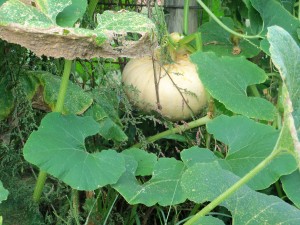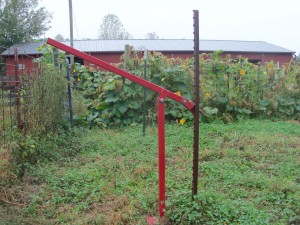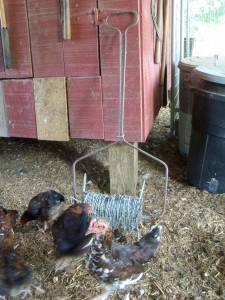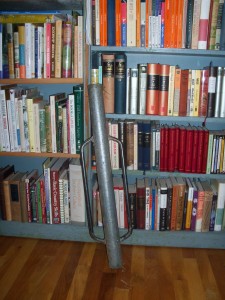I awoke yesterday morning at my usual time. Everyone has his internal clock, and an hour before sunrise mine goes off. Always has. Checking the temperature, I saw that we had dropped for the first time this fall into the low 40s. The wind was up, blowing the wind chimes as I made coffee. The cold front continued to move into our valley and blew hard all day.
I compulsively checked email and wrote a few letters before waking Cindy up. A lot of small to medium tasks on our to-do list: working on hog fencing, washing clothes, baking bread, checking the bees, doing the usual chores, putting up siding on the new hay barn, laying down fresh bedding for the sheep.
By 8:30 Caleb had shown up from his home down the hill. He and I gathered our tools and headed to the hog paddock. The paddock is a wooded area of about two acres. It runs at a 25 degree slope from east to west. Over the years, the hogs have rooted away the eastern edge along the fenceline, leaving gaps in some places of as much as 12 inches at the bottom of the fence. Our task was to lower each hog panel to ground level and reset the electric wire to about six inches above the ground. It was a straightforward task that Caleb and I were able to complete by noon.
The whole time we were working, with the cold wind seeping into the valley, I kept thinking about catfish. As a kid I lived for those moments to run my trotlines, getting up every two hours throughout the night, checking the lines, removing the fish and rebaiting hooks. ‘Long about sunup, I’d spend an hour or two cleaning the catfish hung on the old oak tree in the backyard. Having dumped the heads and entrails back into the pond, I’d head into the house to breakfast. With those thoughts in mind, I headed in for lunch of a couple of lamb chops and winter squash soup from the night before, leaving Caleb to put away the tools.
Cindy, meanwhile, had been busy through the morning with washing and hanging clothes out to dry, baking bread, prepping winter squash for freezing and checking the bees. After lunch, our friend Susan showed up bearing homemade preserves: pear butter, fresh cider vinegar and candied jalapenos. She was also picking up a quarter-beef. After she departed, I went for a nice walk and smoked a cigar. A cool fall afternoon is the perfect time for a smoke and reflective walk. An hour later, I was back at the house, where Cindy and I enjoyed coffee and fresh baked bread with some of Susan’s pear butter.
After coffee, we headed back outside and spent a couple of hours putting siding up on the barn, milled from our new sawmill. Cindy has been doing most of the work putting it up, but now I have done my bit and can rightfully claim that it was a mutual project. Right?
Back inside for a rare co-produced dinner, a rooster simmered with herbs and onions from the garden for a few hours by me, then further seasoned by Cindy and the stock topped with her homemade dumplings. Chicken and dumplings as the mercury dips to 35 degrees—now that is the way to complete a great day.
……………………………………………………………………………………………….
Reading this weekend: Galahad at Blandings by P.G. Wodehouse. Hard to be disgruntled with the state of the world when Wodehouse is at hand.




